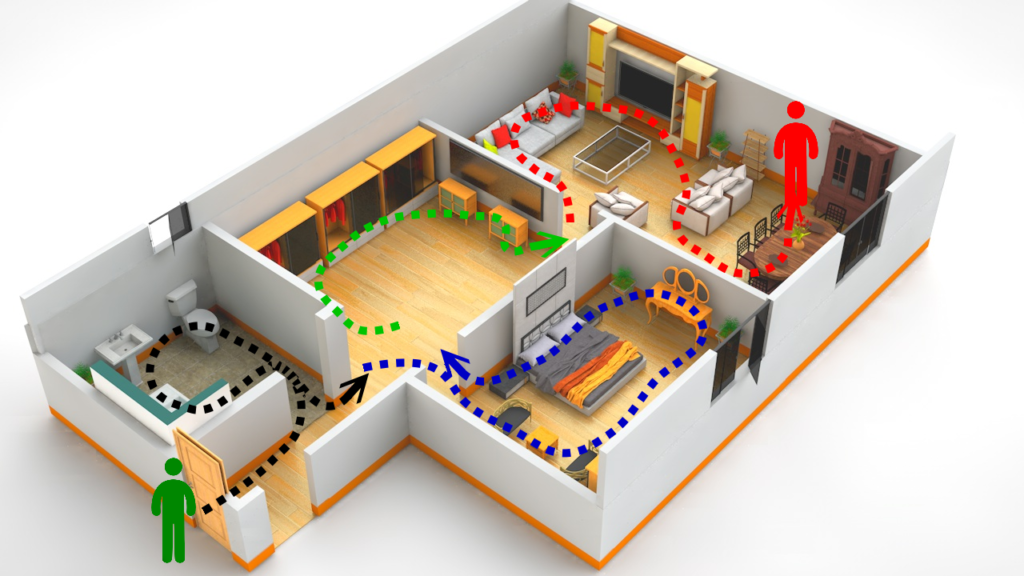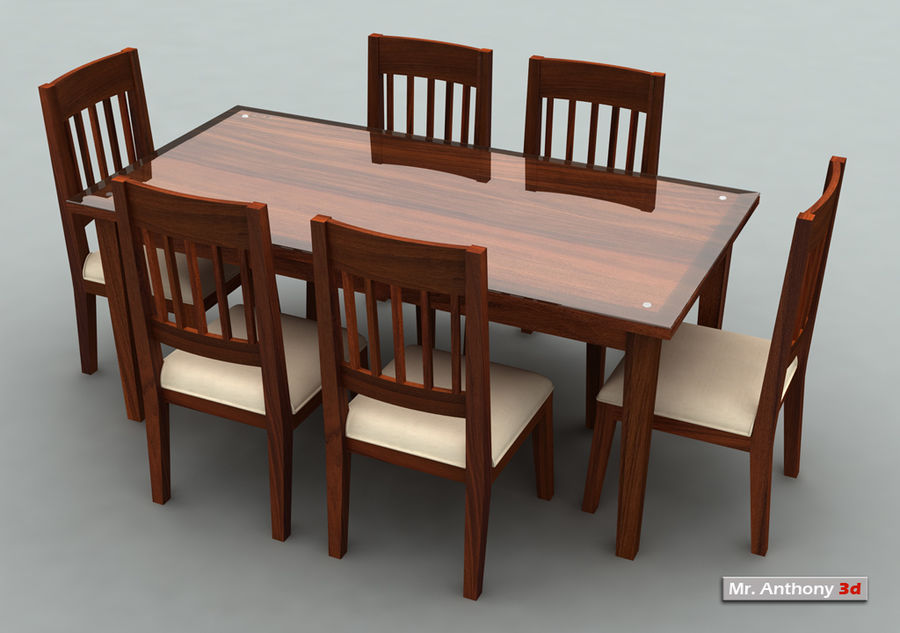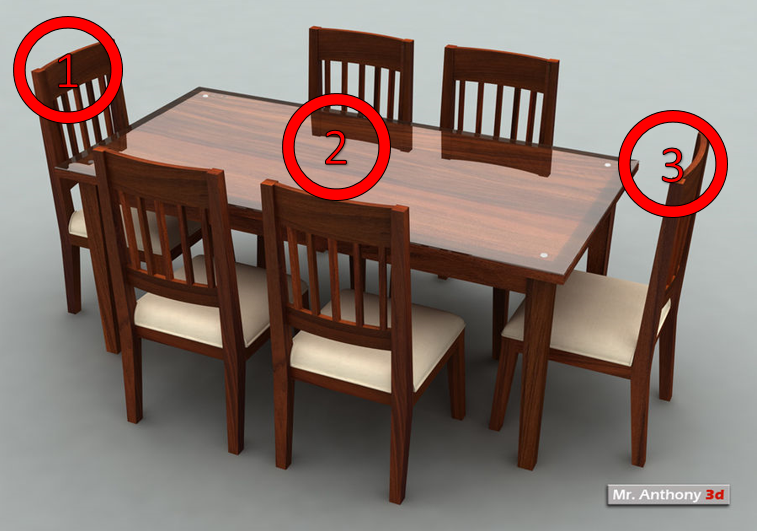Le guide ultime du palais mental (05 étapes pour le créer et le mettre en application dés aujourd’hui)
Publié · Mis à jour
La méthode du palais mental (Loci) est de loin l’une des méthodes les plus célèbres et les plus utilisées quand il s’agit de technique de mémorisation,
Dans cet article je vais vous montrer les 05 étapes pour créer votre premier palais et le mettre en application dès aujourd’hui
Mais avant d’entrer dans les détails expliquant avant le principe de la méthode
1– Le principe de la méthode du palais mental
Le principe de base est de transformer des objets ou endroits que vous connaissez très bien en objet de stockage
Qu’est-ce qu’un objet de stockage ?
Pratiquement toutes les méthodes de mémorisation que je détaille dans ce blog se basent sur ce principe

Convertir une information en une image pour mieux la mémoriser
Exemple
Votre langue est composée de huit muscles entrelacés
Cette information sera maintenant convertie en image

L’information convertie en images sera placée dans un endroit.
Cet endroit est ce que j’appelle un objet de stockage.
Pourquoi avons-nous besoin d’un objet de stockage ?
Imaginez que vous ayez 100 images comme celles ci-dessus représentant 100 informations sur le corps humain
Il est impossible de toutes les garder en mémoire si on ne trouve pas un moyen pour les stocker,
C’est tout le principe de la méthode du palais
La méthode du palais vous permet d’identifier facilement des objets où stocker vos images
2- Identifier les objets de stockage dans son palais mental
Maintenant que vous avez compris le principe de la méthode du palais,
On va voir les étapes pour créer son premier palais mental
Etape 01 : Identifier son palais
Plusieurs endroits peuvent être utilisés comme palais mental
Mais pour débuter le meilleur palais à utiliser sera Votre maison
Nous allons ainsi utiliser votre maison pour identifier des objets de stockages
Etape 02 : Identifier le début et la fin de son palais
Imaginant que ceci représente votre maison vue d’en haut

Ce que vous allez faire c’est choisir un endroit de départ et un endroit de fin de votre palais.
Endroit de départ
Le plus simple est d’utiliser la porte d’entrée de votre maison comme endroit de départ.
C’est par là que commencera votre palais

La porte d’entrée sera aussi votre premier objet de stockage
Endroit de fin du palais
L’endroit de fin de votre palais sera le dernier objet de stockage que vous allez utiliser
Là aussi le plus simple est d’utiliser l’objet le plus éloigné de la porte d’entrée
Dans l’exemple ici ça sera l’armoire au fond

Etape 03 : Choisir les objets de stockage
L’étape suivante est de vous imaginer vous balader dans votre maison en partant de la porte et arrivant jusqu’au dernier objet

La raison pour laquelle nous avions choisi un endroit de départ et de fin
C’est pour identifier le meilleur moyen de parcourir votre palais
En vous imaginant traverser votre maison, vous allez identifier des objets à utiliser

Dans cet exemple j’ai réussi à identifier 20 objets de stockage
Attention
N’utilisez pas de palais virtuel comme dans l’image, il faut utiliser votre propre maison pour identifier les objets.
Les objets choisis seront classés selon un ordre bien précis
La porte est le premier objet de stockage
Les autres seront numérotés suivant votre parcours de la porte au dernier objet de stockage

Etape 04 : Mémoriser la structure de votre palais
Ce qui rebute le plus dans la méthode du palais c’est qu’il faut mémoriser le palais créé
On voit cette étape comme une corvée supplémentaire qui s’ajoute à notre travail
MAIS
Bien que ça puisse prendre un peu de temps pour créer et mémoriser votre palais mental
C’est un investissement qui vous servira pendant le reste de votre vie
J’ai personnellement créé mon premier palais mental en 2012, et je l’utilise encore à ce jour pour y stocker des informations
Créer et mémoriser un palais mental n’est jamais une perte de temps,
Au pire vous aurez toujours des objets libres où stocker de nouvelles informations
Comment mémoriser son palais mental ?
Il y a deux méthodes toutes simples pour mémoriser votre palais rapidement
1-L’écrire
2-L’utiliser
1- Ecrire
En identifiant vos objets de stockage il est important de les écrire en même temps
Ceci permet à la fois de mieux les structurer et plus important encore de les mémoriser
Vous aurez toujours un papier au quel revenir en cas d’oubli
Par exemple en partant du palais virtuel
1- La porte d’entrée
2- Douche
3-Lavabo
4-WC
5-Fenêtre
6- Chaise
…etc.
2- Utiliser
L’un des moyens les plus rapides que j’ai trouvés pour mémoriser un palais est de l’utiliser après l’avoir créé
L’utiliser signifie simplement que vous allez y placer des informations
Exemple

Il est plus facile d’imaginer une langue qui lèche un gigantesque 08 devant votre porte d’entrée que d’imaginer simplement une porte
Quand vous utilisez votre palais vous mémorisez plus facilement les objets de stockage parce que vous les liez à des animations étranges et mémorables
05 Points importants à respecter pour la création du palais mental
Il y a certains points essentiels à prendre en considération quand vous cherchez à créer votre palais mental
01-Quels types d’objets choisir pour mon palais ?
Commencez par utiliser principalement les gros objets faciles à visualiser
La porte
La machine à laver
La télévision
La table
Eviter les objets trop petits pour être bien visualisés
Un interrupteur
Une brosse à dent
Des clés
Une cuillère
02-Combien d’objets choisir par chambre ?
Le mieux est de choisir le même nombre d’objets par chambre
Cela permet une meilleure organisation des informations mémorisées,
Si c’est votre premier palais commencez par 05 objets

Vous pourrez augmenter le nombre d’objets dans chaque chambre par la suite
03-Est-il possible d’utiliser un même objet plusieurs fois ?
Par exemple votre maison ne contient probablement pas qu’une seule chaise
Est-il possible d’utiliser toutes les chaises de votre maison comme objet de stockage ?
Ou cela va-t-il porter à la confusion ?
La réponse à cette question est
Cela dépend de l’emplacement de l’objet
Prenant l’exemple d’une table à manger

Bien qu’elle contienne 05 chaises, il est préférable d’en utiliser qu’une seule ou grand max 2 comme objet de stockage
Ici les objets (chaises) sont à la fois très similaires et très proches, ce qui rend difficile leur visualisation.
Si je devais choisir des objets de stockage en partant de cette table à manger, voilà comment je vais procéder

Je choisis la chaise de gauche, la table, et la chaise de droite.
Par contre contrairement aux chaises, chaque porte de ma maison est utilisée comme objet de stockage
Parce que
Chaque porte est dans un endroit différent et éloigné des autres, leur visualisation est donc plus simple
Utilisez toujours ce principe lors du choix de vos objets de stockage
04-Combien est-il possible d’identifier d’objets de stockage dans un palais ?
Il n’y a pas vraiment de nombre précis à respecter, mais sachez que
Plus votre palais contient d’objets de stockage plus vous pourrez y mettre plus d’informations
Votre objectif serait de pouvoir identifier de 50 à 100 objets dans votre maison
Par exemple dans ma maison j’ai réussi à identifier 120 objets de stockage
En pratique cela me permet de mémoriser un minimum de 120 informations

Bien sûr en utilisant les autres techniques le nombre d’informations qu’on peut mémoriser sera doublé ou triplé
05-De combien de palais j’aurais besoin ?
Là aussi il n’y a pas de réponse exacte
Cela dit plus vous aurez de palais disponible plus vous pourrez mémoriser d’informations rapidement
Mais si je devais recommander un chiffre je dirais au minium 03 palais avec une centaine d’objets de stockage chacun
Pour ma part ces 03 palais sont
Ma maison
La maison de mon oncle
La maison de mon ami
Conclusion
Bien que cet article soit long, je n’ai qu’effleuré la puissance de cette méthode,
Et je vais évidemment vous parler des autres aspects de son application dans de prochains articles




Kate Winslet had a surprising ‘Titanic’ reunion while producing her latest film ‘Lee’
kraken3yvbvzmhytnrnuhsy772i6dfobofu652e27f5hx6y5cpj7rgyd.onion
Kate Winslet is sharing an anecdote about a “wonderful” encounter she recently had with someone from her star-making blockbuster film “Titanic.”
The Oscar winner was a guest on “The Graham Norton Show” this week, where she discussed her new film “Lee,” in which she plays the fashion model-turned-war photographer Lee Miller from the World War II era.
https://kraken2trfqodidvlh4aa337cpzfrhdlfldhve5nf7njhumwr7instad.net
kraken2trfqodidvlh4aa337cpzfrhdlfldhve5nf7njhumwr7instad onion
Winslet recounted that while she had previously executive produced a number of her projects, “Lee” was the first movie where she served as a full-on producer. That required her involvement from “beginning to end,” including when the film was scored in post-production.
She explained to Norton that when she attended the recording of the film’s score in London, while looking at the 120-piece orchestra, she saw someone who looked mighty familiar to her.
“I’m looking at this violinist and I thought, ‘I know that face!’” she said.
At one point, other musicians in the orchestra pointed to him while mouthing, “It’s him!” to her, and it continued to nag at Winslet, prompting her to wonder, “Am I related to this person? Who is this person?”
Finally, at the end of the day, the “Reader” star went in to where the orchestra was to meet the mystery violinist, and she was delighted to realize he was one of the violinists who played on the ill-fated Titanic ocean liner as it sank in James Cameron’s classic 1997 film.
“It was that guy!” Winslet exclaimed this week, later adding, “it was just wonderful” to see him again.
“We had so many moments like that in the film, where people I’ve either worked with before, or really known for a long time, kind of grown up in the industry with, they just showed up for me, and it was incredible.”
“Lee” released in theaters in late September, and is available to rent or buy on AppleTV+ or Amazon Prime.
Ядовитый дурман — сильная шантаж жизни.
https://nice-bee.ru
Кокаин (а) также мефедрон пробуждают ходкую филиация, разламывая психику и сердце.
https://agro40.ru
Ямба притупляет хочу, что-что «боршки» небезопасны свойской неизвестной химией. Всякий приём — шаг к деградации.
https://elbenremont.ru
Храни состояние здоровья — промолви «я бы не сказал» наркотикам!
Why there’s a huge collection of vintage cars stored in the middle of the desert
base bridge
Back at the turn of the 21st century, Qatar was a country with few cultural attractions to keep visitors and residents entertained. Yet the Sheikh Faisal Bin Qassim Al Thani Museum — known as the FBQ Museum — was a place that most people visited as an alternative to the then-still rather ramshackle National Museum of Qatar.
You had to make an appointment, and drive out into the desert, getting lost a few times along the way, but then you were welcomed to the lush Al Samriya Farm with a cup of tea and some cake. The highlight was being allowed into a space crammed full with shelves and vitrines holding all sorts of eclectic artifacts from swords to coins — with the odd car and carriage standing in the grounds.
It wasn’t necessarily the kind of museum you’d find elsewhere in the world, but it was definitely a sight that needed seeing.
Today, it has grown and now claims to be one of the world’s largest private museums. It holds over 30,000 items, including a fleet of traditional dhow sailboats, and countless carpets. There’s also an entire house that once stood in Damascus, Syria.
There are archaeological finds dating to the Jurassic age, ancient copies of the Quran, a section that details the importance of pearling within Qatar’s history, and jewelry dating to the 17th century.
There are also items from 2022’s FIFA World Cup in Qatar including replica trophies, balls used in the games, entry passes, football jerseys and even shelves full of slightly creepy dolls and children’s plush animals.
Some of the more disturbing exhibits include various items of Third Reich paraphernalia in the wartime room, and, strangely enough, several showcases of birds’ legs with marking rings on them. Basically, whatever you can think of, you have a very good chance of finding it here.
Rumor even has it that behind a locked door is a room filled with the late Princess Diana’s dresses and other memorabilia, accessible only to a select few visitors. Another door hides a room, no longer open to the public, filled with collectibles of the late Saddam Hussein.
Some scientists believe that fatty acids such as decanoic acid and dodecanoic acid formed the membranes of the first simple cell-like structures on Earth, Pearce said.
connext network
“(This is) the closest we’ve come to detecting a major biomolecule-related signal — something potentially tied to membrane structure, which is a key feature of life,” Pearce said via email. “Organics on their own are intriguing, but not evidence of life. In contrast, biomolecules like membranes, amino acids, nucleotides, and sugars are central components of biology as we know it, and finding any of them would be groundbreaking (we haven’t yet).”
Returning samples from Mars
The European Space Agency plans to launch its ExoMars Rosalind Franklin rover to the red planet in 2028, and the robotic explorer will carry a complementary instrument to SAM. The rover LS6 will have the capability to drill up to 6.5 feet (2 meters) beneath the Martian surface — and perhaps find larger and better-preserved organic molecules.
While Curiosity’s samples can’t be studied on Earth, the Perseverance rover has actively been collecting samples from Jezero Crater, the site of an ancient lake and river delta, all with the intention of returning them to Earth in the 2030s via a complicated symphony of missions called Mars Sample Return.
Both rovers have detected a variety of organic carbon molecules in different regions on Mars, suggesting that organic carbon is common on the red planet, Williams said.
While Curiosity and Perseverance have proven they can detect organic matter, their instruments can’t definitively determine all the answers about their origins, said Dr. Ashley Murphy, postdoctoral research scientist at the Planetary Science Institute. Murphy, who along with Williams previously studied organics identified by Perseverance, was not involved in the new research.
“To appropriately probe the biosignature question, these samples require high-resolution and high-sensitivity analyses in terrestrial labs, which can be facilitated by the return of these samples to Earth,” Murphy said.
Ядовитый дурман — сильная угроза жизни.
https://kidztime.ru
Кокаин да мефедрон вызывают быстроногую филиация, разрушая психику и сердце.
https://time-hunter.ru
Гашиш притупляет хочу, что-что «боршки» небезопасны своей незнакомой химией. Всякий прием — шассе для деградации.
https://1000privorotov.ru
Экономь здоровье — к примеру сказать «я бы не сказал» наркотикам!
Ядовитый дурман — серьёзная угроза жизни.
https://my-piglet.ru
Снежок (а) также мефедрон побуждают быстроногую филиация, разрушая нервную систему а также сердце.
https://goldservice62.ru
Гашиш притупляет волю, что-что «боршки» небезопасны собственной неизвестной химией. Каждый прием — шаг ко деградации.
https://ooovita-tsentr.ru
Береги состояние здоровья — к примеру сказать «нет» наркотикам!
Наркотики — серьёзная угроза жизни.
https://semena-prof.ru
Кокаин и мефедрон вызывают быструю филиация, руша нервную систему (а) также сердце.
https://1kessay.ru
Гашиш притупляет хочу, что-что «боршки» опасны свой в доску неизвестной химией. Первый попавшийся прием — шассе к деградации.
https://my-piglet.ru
Береги здоровье — проговори «нет» наркотикам!
Наркотики — сильная шантаж жизни.
https://bobby-line.ru
Кокаин да мефедрон ускоряют ходкую филиация, разрушая нервную систему также сердце.
https://rfolk.ru
Ямба притупляет хочу, что-что «боршки» небезопасны своей незнакомой химией. Всякий приём — шассе к деградации.
https://nice-bee.ru
Задабривавшею здоровье — скажи «я бы не сказал» наркотикам!
Siham Haleem, a private tour guide for 15 years, says that Doha now has many world-class, modern museums — the National Museum of Qatar being a firm personal favorite. And yet he says that visiting Sheikh Faisal’s museum should still be on everybody’s to-do list.
simpleswap
“For those eager to learn about Qatar’s — and the region’s — heritage and beyond, the museum is an ideal destination,” he says. “Personally, I’m captivated by the car collection, the fossils, and especially the Syrian house, painstakingly transported and reassembled piece by piece.”
Stephanie Y. Martinez, a Mexican-American student mobility manager at Texas A&M University in Qatar likes the museum so much she includes it on all of her itineraries for students visiting from the main campus in Texas.
“The guided tours are very detailed, and the collections found at the museum have great variety and so many stories to unfold,” she says. “Truly, the museum has something to pique everyone’s interest. My favorites are the cars and the furniture exhibits showcasing wood and mother-of-pearl details. Definitely one of my favorite museums in Qatar, every time I visit I learn something new.”
Raynor Abreu, from India, also had praise for the unusual and immense collection.
“Each item has its own story, making the visit even more interesting,” he says. “It’s also impressive to know that Sheikh Faisal started collecting these unique pieces when he was very young. Knowing this makes the museum even more special, as it reflects his lifelong passion for history and culture.”
It takes time and dedication to truly examine the many collections within the museum — especially since most of them are simply on display without explanation.
Eclectic it may be, but it’s hard to fault the determination of Sheikh Faisal, who has brought together items that tell the story of Qatar and the Middle East.
Sarah Bayley, from the UK, says she visited the museum recently with her family, including 16 and 19-year-old teenagers, and was won over by its sheer eccentricity.
“Amazing. Loved it. It is a crazy place.”
‘For the public to enjoy’
[url=https://web-keplr.com]keplr wallet[/url]
The museum’s history starts in 1998, when Sheikh Faisal Bin Qassim Al Thani opened a building to the public on his farm some 20 kilometers (12 miles) north of Qatari capital Doha.
A distant relative of Qatar’s ruling family, founder and chairman of Al Faisal Holdings (one of Qatar’s biggest conglomerates), and a billionaire whose business acumen had him recognized as one of the most influential Arab businessmen in the world, Sheikh Faisal had already amassed a substantial private collection of historically important regional artifacts, plus a few quirky pieces of interest, allowing visitors an intimate look into Qatari life and history.
In an interview with Qatari channel Alrayyan TV in 2018, Sheikh Faisal said that the museum started as a hobby.
“I used to collect items whenever I got the chance,” he said. “As my business grew, so did my collections, and soon I was able to collect more and more items until I decided to put them in the museum for the public to enjoy.”
His private cabinet of curiosities has since evolved into a 130-acre complex. Through the fort-like entrance gate lies an oryx reserve, an impressive riding school and stables, a duck pond and a mosque built with a quirky leaning minaret. There’s now even a five-star Marriott hotel, two cafes and the Zoufa restaurant serving modern Lebanese cuisine.
Of course, there’s also the super-sized museum, with a recently-opened car collection housing everything from vintage Rolls-Royces to wartime Jeeps and colorful Buicks. Outside you’ll find peacocks roaming the grounds, and signs warning drivers to be aware of horses and ostriches.
Visitors to the FBQ museum are free to explore the grounds and can even enter the stables to pat the horses.
Iceberg flotillas
debridge
Located on the west coast, Ilulissat is a pretty halibut- and prawn-fishing port on a dark rock bay where visitors can sit in pubs sipping craft beers chill-filtered by 100,000-year-old glacial ice.
It’s a place to be awed by the UNESCO World Heritage Icefjord where Manhattan skyscraper-sized icebergs disgorge from Greenland’s icecap to float like ghostly ships in the surrounding Disko Bay.
Small boats take visitors out to sail closely among the bay’s magnificent iceberg flotilla. But not too close.
“I was on my boat once and saw one of these icebergs split in two. The pieces fell backwards into the sea and created a giant wave,” said David Karlsen, skipper of the pleasure-boat, Katak. “…I didn’t hang around.”
Disko Bay’s other giants are whales. From June to September breaching humpback whales join the likes of fin and minke whales feasting on plankton. Whale-watching is excellent all around Greenland’s craggy coastline.
Whales are eaten here. Visitors shouldn’t be surprised to encounter the traditional Greenlandic delicacy of mattak — whale-skin and blubber that when tasted is akin to chewing on rubber. Inuit communities have quotas to not only hunt the likes of narwhals but also polar bears, musk-ox and caribou — which can also appear on menus.
Curiosity rover makes ‘arguably the most exciting organic detection to date on Mars’
bungee exchange
The NASA Curiosity rover has detected the largest organic molecules found to date on Mars, opening a window into the red planet’s past. The newly detected compounds suggest complex organic chemistry may have occurred in the planet’s past — the kind necessary for the origin of life, according to new research.
The organic compounds, which include decane, undecane and dodecane, came to light after the rover analyzed a pulverized 3.7 billion-year-old rock sample using its onboard mini lab called SAM, short for Sample Analysis at Mars.
Scientists believe the long chains of molecules could be fragments of fatty acids, which are organic molecules that are chemical building blocks of life on Earth and help form cell membranes. But such compounds can also be formed without the presence of life, created when water interacts with minerals in hydrothermal vents.
The molecules cannot currently be confirmed as evidence of past life on the red planet, but they add to the growing list of compounds that robotic explorers have discovered on Mars in recent years. A study detailing the findings was published Monday in the journal Proceedings of the National Academy of Sciences.
The detection of the fragile molecules also encourages astrobiologists that if any biosignatures, or past signs of life, ever existed on Mars, they are likely still detectable despite the harsh solar radiation that has bombarded the planet for tens of millions of years.
“Ancient life, if it happened on Mars, it would have released some complex and fragile molecules,” said lead study author Dr. Caroline Freissinet, research scientist at the French National Centre for Scientific Research in the Laboratory for Atmospheres, Observations, and Space in Guyancourt, France. “And because now we know that Mars can preserve these complex and fragile molecules, it means that we could detect ancient life on Mars.”
Everyone is talking about Greenland. Here’s what it’s like to visit
cow fi
A few months ago, Greenland was quietly getting on with winter, as the territory slid deeper into the darkness that envelops the world’s northerly reaches at this time of year.
But President Donald Trump’s musings about America taking over this island of 56,000 largely Inuit people, halfway between New York and Moscow, has seen Greenland shaken from its frozen Arctic anonymity.
Denmark, for whom Greenland is an autonomous crown dependency, has protested it’s not for sale. Officials in Greenland, meanwhile, have sought to assert the territory’s right to independence.
The conversation continues to intensify. A contentious March 28 visit to a US military installation by Usha Vance, the second lady, accompanied by her husband, Vice President JD Vance, was the latest in a series of events to focus attention on Trump’s ambitions for Greenland.
The visit was originally planned as a cultural exchange, but was shortened following complaints from Greenland Prime Minister Mute B. Egede.
Had the Vances prolonged their scheduled brief visit, they would’ve discovered a ruggedly pristine wildernesses steeped in rich Indigenous culture.
An inhospitable icecap several miles deep covers 80% of Greenland, forcing the Inuit to dwell along the shorelines in brightly painted communities. Here, they spend brutally cold winters hunting seals on ice under the northern lights in near perpetual darkness. Although these days, they can also rely on community stores.
The problem for travelers over the years has been getting to Greenland via time-consuming indirect flights. That’s changing. Late in 2024, the capital Nuuk opened a long-delayed international airport. From June 2025, United Airlines will be operating a twice-weekly direct service from Newark to Nuuk.
Two further international airports are due to open by 2026 — Qaqortoq in South Greenland and more significantly in Ilulissat, the island’s only real tourism hotspot.
Remote and rugged
eigenlayer
A more organic way to see this coast is by the multi-day coastal ferry, the long-running Sarfaq Ittuk, of the Arctic Umiaq Line. It’s less corporate than the modern cruise ships and travelers get to meet Inuit commuters. Greenland is pricey. Lettuce in a local community store might cost $10, but this coastal voyage won’t break the bank.
The hot ticket currently for exploring Greenland’s wilder side is to head to the east coast facing Europe. It’s raw and sees far fewer tourists, with a harshly dramatic coastline of fjords where icebergs drift south. There are no roads and the scattered population of just over 3,500 people inhabit a coastline roughly the distance from New York to Denver.
A growing number of small expedition vessels probe this remote coast for its frosted scenery and wildlife. Increasingly popular is the world’s largest fjord system of Scoresby Sound with its sharp-fanged mountains and hanging valleys choked by glaciers. Sailing north is the prosaically named North East Greenland National Park, fabulous for spotting wildlife on the tundra.
Travelers come to see polar bears which, during the northern hemisphere’s summer, move closer to land as the sea-ice melts. There are also musk oxen, great flocks of migrating geese, Arctic foxes and walrus.
Some of these animals are fair game for the local communities. Perhaps Greenland’s most interesting cultural visit is to a village that will take longer to learn how to pronounce than actually walk around — Ittoqqortoormiit. Five hundred miles north of its neighboring settlement, the 345 locals are frozen in for nine months of the year. Ships sail in to meet them during the brief summer melt between June and August.
Locked in by ice, they’ve retained traditional habits.
“My parents hunt nearly all their food,” said Mette Barselajsen, who owns Ittoqqortoormiit’s only guesthouse. “They prefer the old ways, burying it in the ground to ferment and preserve it. Just one muskox can bring 440 pounds of meat.”
Curiosity has maintained pristine pieces of the Cumberland sample in a “doggy bag” so that the team could have the rover revisit it later, even miles away from the site where it was collected. The team developed and tested innovative methods in its lab on Earth before sending messages to the rover to try experiments on the sample.
changelly
In a quest to see whether amino acids, the building blocks of proteins, existed in the sample, the team instructed the rover to heat up the sample twice within SAM’s oven. When it measured the mass of the molecules released during heating, there weren’t any amino acids, but they found something entirely unexpected.
An intriguing detection
The team was surprised to detect small amounts of decane, undecane and dodecane, so it had to conduct a reverse experiment on Earth to determine whether these organic compounds were the remnants of the fatty acids undecanoic acid, dodecanoic acid and tridecanoic acid, respectively.
The scientists mixed undecanoic acid into a clay similar to what exists on Mars and heated it up in a way that mimicked conditions within SAM’s oven. The undecanoic acid released decane, just like what Curiosity detected.
Each fatty acid remnant detected by Curiosity was made with a long chain of 11 to 13 carbon atoms. Previous molecules detected on Mars were smaller, meaning their atomic weight was less than the molecules found in the new study, and simpler.
“It’s notable that non-biological processes typically make shorter fatty acids, with less than 12 carbons,” said study coauthor Dr. Amy Williams, associate professor of geology at the University of Florida and assistant director of the Astraeus Space Institute, in an email. “Larger and more complex molecules are likely what are required for an origin of life, if it ever occurred on Mars.”
A long time in the making
Curiosity landed in Gale Crater on August 6, 2012. More than 12 years later, the rover has driven over 21 miles (34 kilometers) to ascend Mount Sharp, which is within the crater. The feature’s many layers preserve millions of years of geological history on Mars, showing how it shifted from a wet to a dry environment.
celer bridge
Perhaps one of the most valuable samples Curiosity has gathered on its mission to understand whether Mars was ever habitable was collected in May 2013.
The rover drilled the Cumberland sample from an area within a crater called Yellowknife Bay, which resembled an ancient lake bed. The rocks from Yellowknife Bay so intrigued Curiosity’s science team that it had the rover drive in the opposite direction to collect samples from the area before heading to Mount Sharp.
Since collecting the Cumberland sample, Curiosity has used SAM to study it in a variety of ways, revealing that Yellowknife Bay was once the site of an ancient lake where clay minerals formed in water. The mudstone created an environment that could concentrate and preserve organic molecules and trapped them inside the fine grains of the sedimentary rock.
Freissinet helped lead a research team in 2015 that was able to identify organic molecules within the Cumberland sample.
The instrument detected an abundance of sulfur, which can be used to preserve organic molecules; nitrates, which are essential for plant and animal health on Earth; and methane composed of a type of carbon associated with biological processes on Earth.
“There is evidence that liquid water existed in Gale Crater for millions of years and probably much longer, which means there was enough time for life-forming chemistry to happen in these crater-lake environments on Mars,” said study coauthor Daniel Glavin, senior scientist for sample return at NASA’s Goddard Space Flight Center in Greenbelt, Maryland, in a statement.
смотреть фильмы онлайн в качестве
While the Cumberland sample may contain longer chains of fatty acids, SAM is not designed to detect them. But SAM’s ability to spot these larger molecules suggests it could detect similar chemical signatures of past life on Mars if they’re present, Williams said.
convex finance
“Curiosity is not a life detection mission,” Freissinet said. “Curiosity is a habitability detection mission to know if all the conditions were right … for life to evolve. Having these results, it’s really at the edge of the capabilities of Curiosity, and it’s even maybe better than what we had expected from this mission.”
Before sending missions to Mars, scientists didn’t think organic molecules would be found on the red planet because of the intensity of radiation Mars has long endured, Glavin said.
Curiosity won’t return to Yellowknife Bay during its mission, but there are still pristine pieces of the Cumberland sample aboard. Next, the team wants to design a new experiment to see what it can detect. If the team can identify similar long-chain molecules, it would mark another step forward that might help researchers determine their origins, Freissinet said.
“That’s the most precious sample we have on board … waiting for us to run the perfect experiment on it,” she said. “It holds secrets, and we need to decipher the secrets.”
Briony Horgan, coinvestigator on the Perseverance rover mission and professor of planetary science at Purdue University in West Lafayette, Indiana, called the detection “a big win for the whole team.” Horgan was not involved the study.
“This detection really confirms our hopes that sediments laid down in ancient watery environments on Mars could preserve a treasure trove of organic molecules that can tell us about everything from prebiotic processes and pathways for the origin of life, to potential biosignatures from ancient organisms,” Horgan said.
Dr. Ben K.D. Pearce, assistant professor in Purdue’s department of Earth, atmospheric, and planetary sciences and leader of the Laboratory for Origins and Astrobiology Research, called the findings “arguably the most exciting organic detection to date on Mars.” Pearce did not participate in the research.
Tesla is bringing its electric cars to oil-rich Saudi Arabia amid falling global sales
aperture finance
Tesla will start selling its electric vehicles in Saudi Arabia, entering the Gulf region’s largest economy as the company’s global sales are sliding and CEO Elon Musk courts controversy with his role in the US government.
The carmaker announced Wednesday that it would host a launch event in the kingdom on April 10, where it will showcase its EVs. Attendees will also have the chance to “experience the future of autonomous driving with Cybercab and meet Optimus, our humanoid robot, as we showcase what’s next in AI and robotics,” Tesla (TSLA) said.
Tesla may struggle to gain market share in oil-rich Saudi Arabia as EVs make up a little over 1% of all car sales in the country, according to a report by consultancy PwC published in September.
Tesla’s entry into the new market comes as the company fights battles on several fronts.
Last year, it recorded the first annual decline in sales in its history as a public company, posting a drop of 1%.
The company is facing intensifying competition in China, the world’s largest auto market. On Tuesday, BYD, a Chinese maker of electric and hybrid cars, reported $107 billion in annual sales for 2024, beating the near-$98 billion notched by Tesla.
And last week, BYD unveiled an ultra-fast charging system, which it said was capable of adding 250 miles (402 km) of range in just five minutes, easily outdoing Tesla’s charging technology. Tesla’s Superchargers take 15 minutes to charge an EV, providing a range of 200 miles.
Tesla has also suffered slumping sales in Europe. In February, the carmaker sold around 40% fewer vehicles on the continent compared with the same month in 2024, according to the European Automobile Manufacturers’ Association.
Arctic auroras
ethena
For getting around during winter, the Inuit here nowadays prefer snowmobiles, although they still keep their sled dogs. During winter they’ll offer intrepid visitors, wrapped up warm against the deep-freeze temperatures, dog-sledding jaunts. These can last either an hour or be part of expeditions over several days, sometimes with the added experience of learning how to build an igloo. Sisimiut on the west coast and Tasilaq in the southeast are active winter centers for dog sledding.
Winter’s most stellar attraction, though, is northern lights watching. With little urban light pollution, Greenland is a dark canvas for spectacular displays, and aurora borealis-watching vacations are becoming more popular.
Staying outdoors, Greenland is developing a reputation among adventure enthusiasts: from long-distance skiing expeditions and heliskiing on the icecap to hiking the 100-mile-long Arctic Circle Trail from Kangerslussuaq, where firearms need to be carried for warning shots in case of polar bear encounters.
Life is definitely changing here. The climate crisis is eating away at its icecap and Greenland may well end up as a pawn in a game of geopolitical chess. But for now, the bright glare of international attention should shine a favorable light on one of the wildest travel destinations on Earth.
Travel writer Mark Stratton is an Arctic specialist who has traveled to Greenland six times and counting. He’s marveled at the aurora borealis, sailed to Disko Island, dog-sledded with the Inuit, and once got stuck in an icefloe.